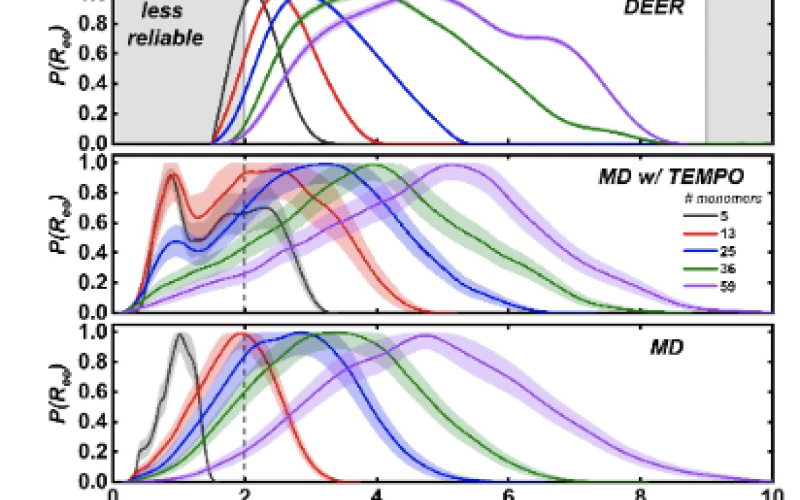
Scientific Achievement
Fully resolved end-to-end distance probability distribution measurements and simulations for aqueous polyethylene oxide (PEO) establish semi-flexible, excluded volume polymer.
Image: End-to-end distance distributions, 𝑃(𝑅_𝑒𝑒), for PEO chains with 5, 13, 25, 36, and 59 monomers. (top) DEER spectroscopy measurements. (middle) MD simulation results for PEO with TEMPO spin label. (bottom) MD simulation results for PEO without spin label.
Significance and Impact
Combination of techniques provides a powerful new approach to characterize conformational landscape of macromolecules.
Research Details
- PEO is a widely studied hydrophilic polymer, but there is a lack of detailed distance information experimentally
- Double electron electron resonance (DEER) spectroscopy directly measures end-to-end distance distributions, ?(?_??) of spin-labeled PEO. Molecular dynamics (MD) simulations readily calculate this.
- Both methods show remarkable agreement with ?(?_??) shape and position, following excluded volume scaling from polymer theory
Nicholas Sherck, et al., JACS (2020).
Work was performed at University of California Santa Barbara.

